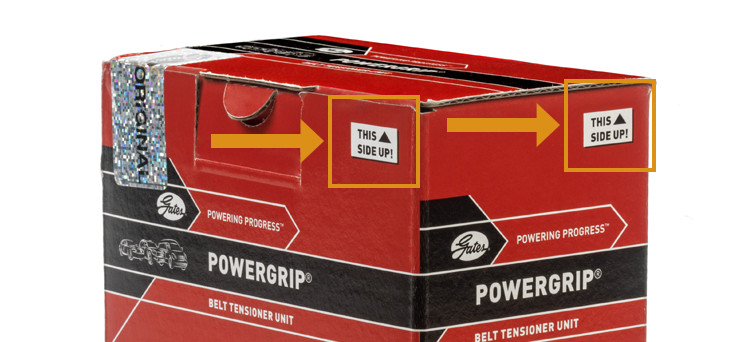Have you ever noticed the ‘This side up’ sign on the packaging of our hydraulic tensioners and hydraulic tensioner kits? The importance of this instruction should not be underestimated. If a hydraulic tensioner (kit) is not stored correctly, air can get into the oil reservoir, creating a dangerous situation. Air can be compressed, causing tooth jump when the engine is started. This, in turn, results in complete engine failure.

Because there is always a chance that the boxes containing our hydraulic tensioners have been improperly stored at distributors or during transport to the garage, we strongly advise you to handle hydraulic elements according to the following guidelines in order to avoid failures:
Timing belt tensioner
To take the
retaining pin out,
slowly compress the tensioner in a vertical position or after installation, remove the pin and let the piston rod come up slowly
while holding the tensioner.
Slowly compress and release the hydraulic element completely. Do this at least five times (let it come up slowly while holding it). This will evacuate possible air from the
oil reservoir. You can do this either on the engine or using a
vertical press.
Auxiliary belt tensioner
Slowly compress and release the
hydraulic element completely. Do this four times, and then install the belt.
General guidelines
In general, you should keep the following rules in mind when handling hydraulic tensioners:
- Never compress hydraulic tensioners in a horizontal position
-
Never disassemble hydraulic tensioners
-
Never cut a belt while the tensioner is still pushing on it (the sudden drop in tension could severely damage the tensioner (and your hands))
-
If oil is leaking out of the element: don’t install it. If it has already been installed: replace it.
Not only kits containing hydraulic elements have a ‘This side up’ sign; we also put this sign on kits containing for instance water pumps or other heavy metals. The contents of those kits are positioned in such a way that the heavy metal parts can never crimp the belt.